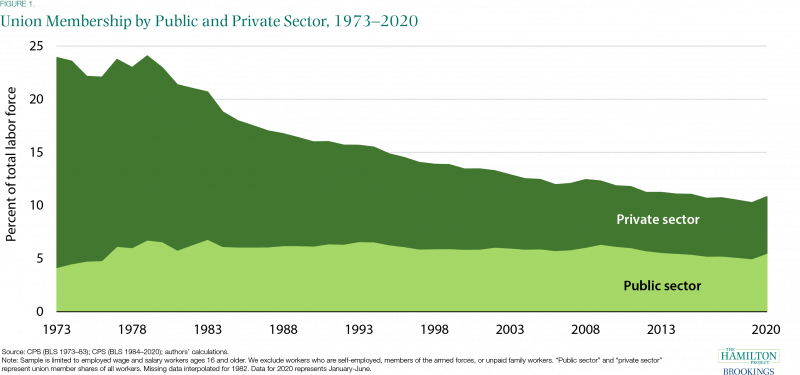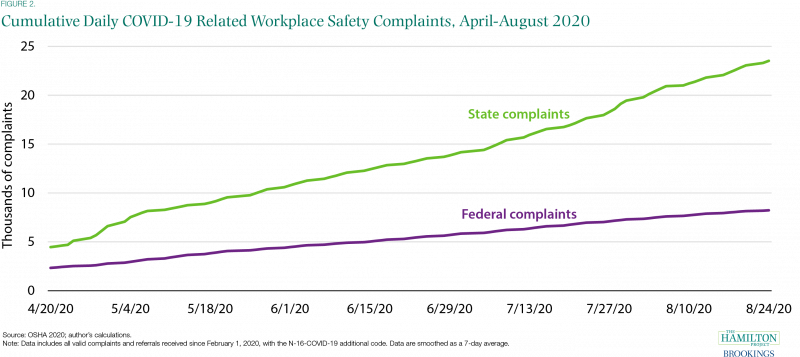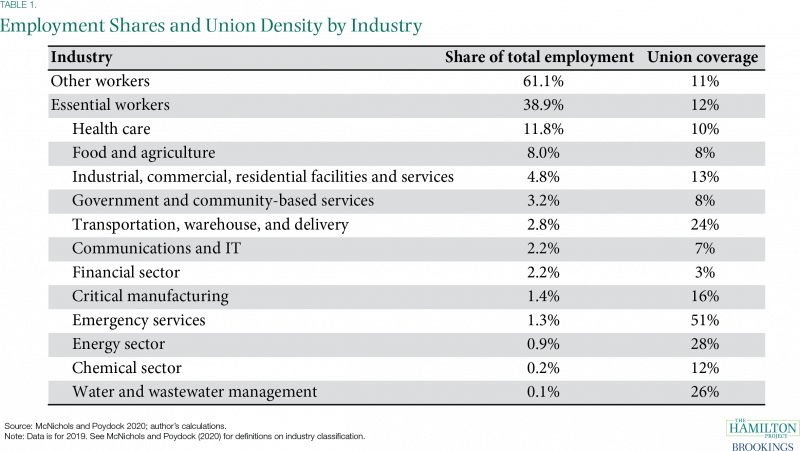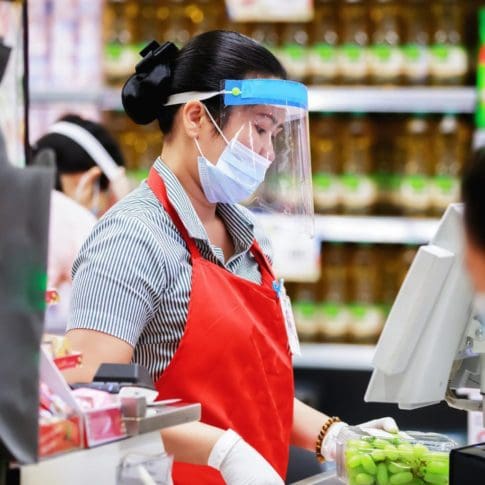Just over a year ago, The Hamilton Project released an economic analysis on private sector labor unions. In that piece, we documented private sector unions’ decades-long decline (see figure 1), discussed the labor market effects of unions, and explored policies to make collective bargaining easier for workers. When we released that report, the economy was much stronger: the unemployment rate was nearing a historic low, and wages were beginning to rise even for workers at the bottom.
 However, as a result of the novel coronavirus (hereafter COVID-19) pandemic and its associated economic contraction, the unemployment rate has remained above 10 percent since April. This massive economic disruption has raised several new labor market challenges, while also magnifying longer-term structural problems. In this blog, I extend our Hamilton Project analysis from last year, show how workplace conditions have changed for workers, and discuss the potential role for private-sector labor unions.
However, as a result of the novel coronavirus (hereafter COVID-19) pandemic and its associated economic contraction, the unemployment rate has remained above 10 percent since April. This massive economic disruption has raised several new labor market challenges, while also magnifying longer-term structural problems. In this blog, I extend our Hamilton Project analysis from last year, show how workplace conditions have changed for workers, and discuss the potential role for private-sector labor unions.
COVID-19 and New Labor Market Challenges
Although the economic devastation has been widespread, the burden has not been borne evenly. For example, the ability to avoid the virus by safely working from home is not a privilege available to all workers. Recent estimates suggest that low-income workers, nonwhite workers, workers with less educational attainment, and workers in service occupations are all less likely to be able to work from home than their peers. Workers who have continued to go into their workplaces—whom we now call “essential” and “frontline”—have been instrumental in keeping the economy running.
Unfortunately, many of these essential workers did not receive adequate access to the necessary personal protective equipment (PPE). For example, research by Daniel Schneider and Kristen Harknett in May found that only 16 percent of employees at big-box superstores had access to a mask and for some superstores fewer than 10 percent had access. Unfortunately, big-box superstores were not unique: the study showed that many large employers in food service, grocery stores and warehouse and fulfillment centers provided minimal access to PPE. Harknett and Schneider also found low rates of glove use among many employers.
Coinciding with this limited access to PPE, many workers began to feel unsafe in their workplaces as a result of the virus. Using data from the Occupational Safety and Health Administration (OSHA), figure 2 shows the cumulative number of COVID-19 related workplace safety complaints. Between April 20th and August 20th, total COVID-19 related workplace safety complaints rose over 350 percent. (Despite these dangerous workplace conditions, most essential workers have not received any additional compensation, with the exception of a few firms instituting temporary pay bumps.)

Labor Unions and Workplace Safety
Labor unions have traditionally been one effective channel for workers to raise concerns about workplace safety and demand action from their employers. Research has found that union members are more likely than nonunion members to utilize internal and external mechanisms to address workplace complaints; recent work by Aaron Sojourner and Jooyoung Yang shows that unionized workplaces are 30 percent more likely to face an inspection for a health or safety violation. (This is particularly important today given that some reports have found that employers may be aggressively suppressing their workers from speaking out about COVID-related concerns).
However, like most Americans, many essential workers are not represented by unions, limiting their power and voice in the workplace. As we documented in our analysis last year, there are a variety of causes of de-unionization, including sectoral shifts in the economy, changes in labor law, increased employer resistance to unions, and certain public policy decisions (e.g., right-to-work laws).
Work from Celine McNicholas and Margaret Poydock shows that just over 1 in 10 essential workers are covered by a union contract (see table 1). While some industries have relatively high union density rates (e.g., emergency services and the energy sector), they often represent relatively small industries as a share of total employment. In larger essential sectors, the union density rates are much lower: only 8 percent of workers in the food and agriculture industry and just 10 percent of healthcare workers are covered by a union contract.

Conclusion
The COVID-19 pandemic has undoubtedly disrupted the U.S. economy in 2020. The virus has presented workers and firms with unique challenges about how to conduct business in the midst of a public health crisis. While some workers have been able to shift their job duties online and work from home, millions of essential workers are unable to do so.
Since the pandemic began, many have been exposed to unsafe work conditions, with the number of safety complaints skyrocketing in recent months. Although some of these challenges that workers are facing are new and specific to the COVID-19 pandemic, many are the consequence of the decades-long decline in worker power. Since nearly 90 percent of essential workers lack union representation, their ability to ensure safe workplaces is limited. The decline in unionization has left essential workers vulnerable and threatened their very safety at work.
In our prior analysis, we summarized several policy options to provide workers with more collective bargaining power, including card check, sectoral bargaining, and enhanced National Labor Relations Board enforcement. Since then, other reports have come out, proposing labor law reforms to protect and support essential workers during the current pandemic and to increase worker power in the long run. As the United States prepares to celebrate Labor Day, it is crucial to think about ways to provide essential workers with more of a voice at work, both during this pandemic and beyond.


